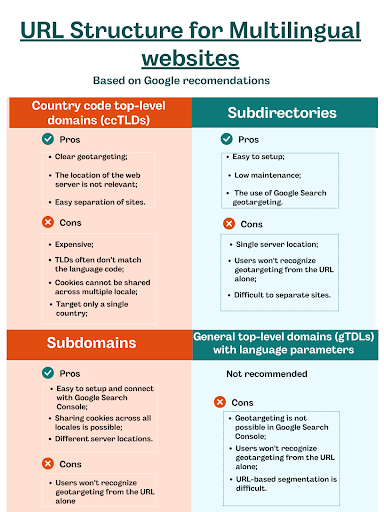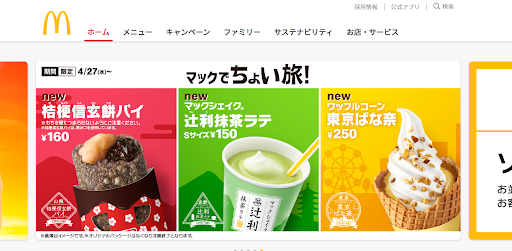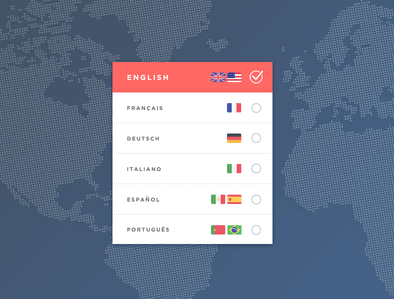With Google processing over 100,000 searches per second, standing out is tough. When your website caters to multiple languages and regions, the challenge multiplies. How do you ensure that a user in France finds your French version, not your Spanish one?
The answer lies in mastering on-page SEO for multilingual websites.
This goes far beyond simple translation. It's about signaling your site's structure to search engines, understanding the unique search habits of different cultures, and avoiding critical penalties for duplicate content.
Here are 10 actionable, best-practice tips to help you conquer multilingual on-page SEO and attract targeted organic traffic from around the globe.
1. Plan Your URL Structure Carefully
First, decide if you're targeting users by country or by language.
- Country Targeting (ccTLDs): For targeting specific countries (e.g., France, Germany), using a country-code top-level domain (ccTLD) like
.fror.deis the clearest signal you can send to search engines. It strongly indicates that your site is for a specific market. - Language Targeting (Subdirectories or Subdomains): If you're targeting speakers of a language across different regions (e.g., Spanish speakers worldwide), subdirectories (
yoursite.com/es/) or subdomains (es.yoursite.com) are better options.- Subdirectories: Generally recommended. They are easier to manage and consolidate domain authority.
- Subdomains: Treated by Google as separate entities, which can dilute SEO authority. However, they offer more flexibility for hosting in different regions.
- Hybrid Targeting: You can also combine methods, like
yoursite.at/de/for German speakers in Austria.

There's no single right answer, but understanding these trade-offs is crucial for your international SEO foundation.
2. Master the hreflang Tag
Once your URLs are set, you need to tell search engines which language and region each page is for. This is the job of the hreflang attribute.
The hreflang tag is a snippet of code that clarifies the relationship between your different language versions. It prevents them from being seen as duplicate content and helps Google serve the correct version to the right user.
"Hreflang is arguably one of the most complex aspects of SEO," admits Sam Meenasian, founder of Business Insurance USA.
You can implement hreflang in three ways: the HTML <head>, the HTTP header, or your XML sitemap.
Example for a page targeting French speakers in Canada:
<link rel="alternate" hreflang="fr-ca" href="http://yoursite.com/fr-ca/" />
Don't forget the x-default value:
This specifies a fallback page for users whose language/region doesn't match any of your specified versions.
<link rel="alternate" hreflang="x-default" href="https://example.com/en/" />
Implementation Methods:
- HTML
<head>: Most common, but can bloat your pages if you have many language versions. - HTTP Header: Best for non-HTML files like PDFs.
- XML Sitemap: The recommended method for large sites. It keeps your HTML clean and is easier to manage. A tool like the SeoSpeedup Sitemap Generator can help you structure this correctly.
Key hreflang Rules:
- Tags must be reciprocal. If Page A links to Page B, Page B must link back to Page A.
- Use absolute, canonical URLs.
- Use the correct ISO 639-1 language and ISO 3166-1 Alpha 2 region codes.
3. Create Clean, Multilingual Sitemaps
For a large site, a single massive sitemap is impractical. Instead, create separate XML sitemaps for each language-region combination and list them in a sitemap index file.
For example:
www.yoursite.com/us/en/sitemap.xmlwww.yoursite.com/us/es/sitemap.xml
This clean organization makes it much easier for search engines to discover and crawl all your localized versions. Submit your sitemap index file to Google Search Console and other webmaster tools.
4. Maintain a Single Language Per Page
Avoid mixing languages on a single page, especially in the main content and navigation. A page with translated body content but an English header and footer creates a confusing user experience and sends mixed signals to search engines.
Translate Everything:
- Main body content
- Navigation menus
- Header and footer text
- Button text and form fields
Keeping the language consistent builds user trust and improves SEO.
5. Localize Keywords—Don't Just Translate
This is the most common mistake in international SEO. Keyword localization is not the same as keyword translation.
You must research how your target audience actually searches in their native language.
- Different Search Volume: A term might be highly searched in one language but rarely in another.
- Different Dialects & Phrasing: "Holiday" in the UK is "vacation" in the US.
- Different Cultural Intent: The problems your product solves might be framed completely differently in another culture.
How to Do It:
- Use Localized Tools: Use tools like Ahrefs or SEMrush and set the target country for your research.
- Analyze Local Competitors: See what keywords your top-ranking local competitors are targeting.
- Think Culturally: Go beyond literal translations to understand the user's true intent.
Conducting separate, in-depth keyword research for each target market is non-negotiable for success.
6. Localize Content: Go Beyond Words
High-quality content is fundamental to SEO. For multilingual sites, this means localization, not just translation.
Localization considers:
- Cultural Norms: Imagery, colors, and examples that resonate locally.
- Units of Measurement: Metric vs. Imperial systems.
- Currency & Payment: Display local currency and offer common local payment methods.
- Date & Time Formats.
- Local Regulations.
- Visuals: Use images and videos that feature local people and settings.
McDonald's is a master of this, tailoring its menu, promotions, and website imagery to each country's tastes and culture.

Localized content builds a much stronger connection with your audience, leading to higher engagement and conversions.
7. Translate Your Metadata
Don't forget the elements that appear on the Search Engine Results Page (SERP). Your metadata is your sales pitch to get the click.
Translate and Optimize:
- Title Tags (
<title>): The blue link on the SERP. - Meta Descriptions (
<meta name="description">): The text snippet below the title. - Image ALT Text: Helps with image search and accessibility.
- URL Slugs: e.g.,
/best-running-shoes/vs./mejores-zapatillas-running/.
Incorporate your localized keywords naturally into this metadata to maximize your visibility and click-through rate in each target market.
8. Optimize for Global Page Speed
Page speed is a core ranking factor and critical for user experience. For a multilingual site, users accessing your server from the other side of the world can experience significant lag.
How to Speed Up:
- Use a Content Delivery Network (CDN): A CDN stores cached copies of your site on servers around the world, delivering content from the server closest to the user.
- Optimize Images: Compress images and use modern formats like WebP.
- Enable Caching & Gzip Compression.
- Minify Code (CSS, JavaScript).
Ensuring a fast experience for all users, regardless of their location, is vital for retention and conversions.
9. Implement a Clear Language Selector
Make it easy for users to switch to their preferred language or region.
Best Practices:
- Make it Visible: Place it in the header or footer.
- Use Clear Labels: Use the full language name (e.g., "Deutsch" instead of "German").
- Avoid Using Flags Alone: Flags represent countries, not languages. A Canadian flag doesn't account for French speakers. If you use flags, pair them with text labels.
- Offer Choice: You can suggest a version based on browser settings, but always allow the user to easily override it.

An intuitive language selector dramatically improves user experience.
10. Monitor and Audit Continuously
A multilingual site has more moving parts and more potential points of failure. Continuous monitoring is key.
What to Track:
- Technical Errors: Use Google Search Console to monitor for
hreflangerrors, crawl issues, and mobile usability problems for each version. - Keyword Rankings & Traffic: Track performance in each target market separately.
- User Behavior Metrics: Analyze bounce rate, session duration, and conversion rates by language/region in Google Analytics.
A SeoSpeedup Site Audit can help you automate this process, continuously checking your site for hreflang conflicts, broken links, and other international SEO issues, providing a clear and prioritized list of fixes.
Conclusion
Optimizing a multilingual website is a complex but rewarding endeavor. By systematically addressing your URL structure, hreflang implementation, content localization, and technical performance, you can build a powerful global presence. These ten tips provide a solid framework to avoid common pitfalls and connect authentically with your international audience.